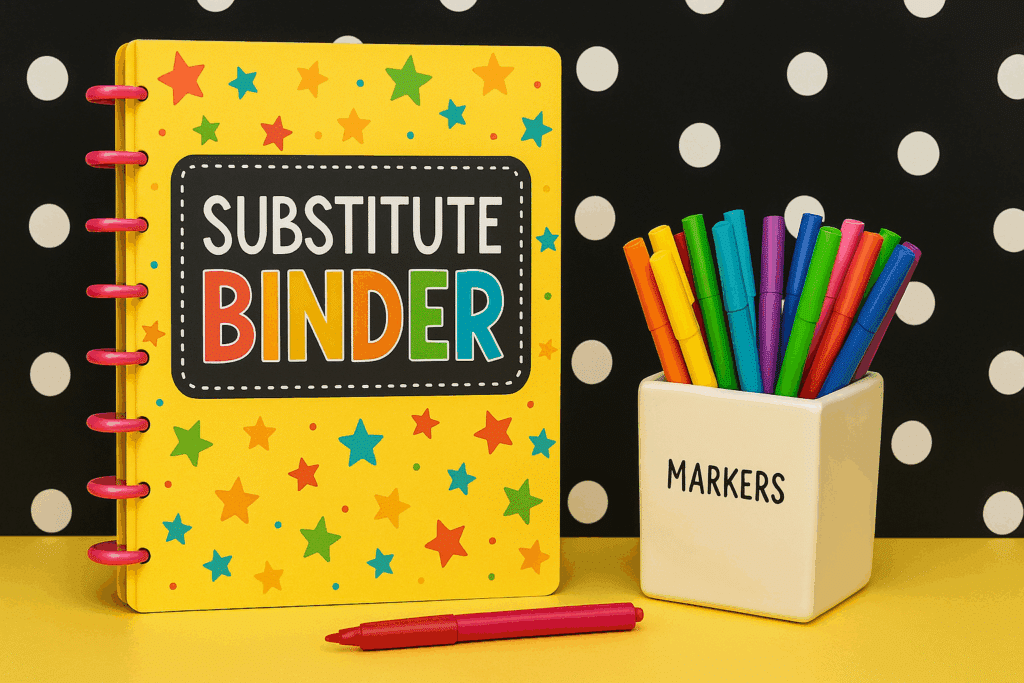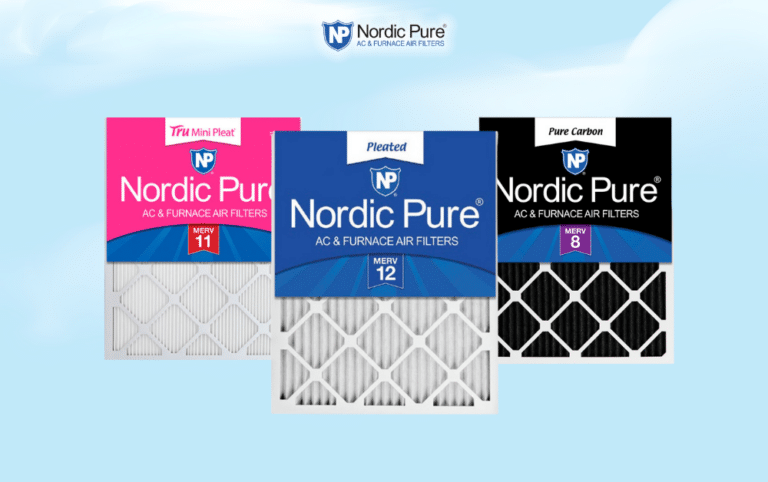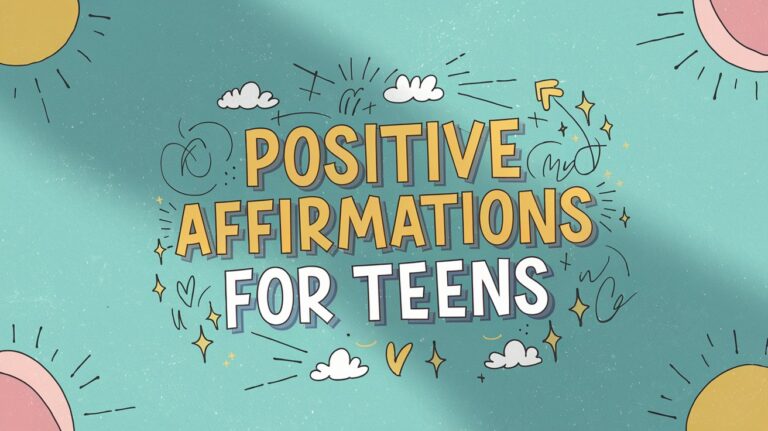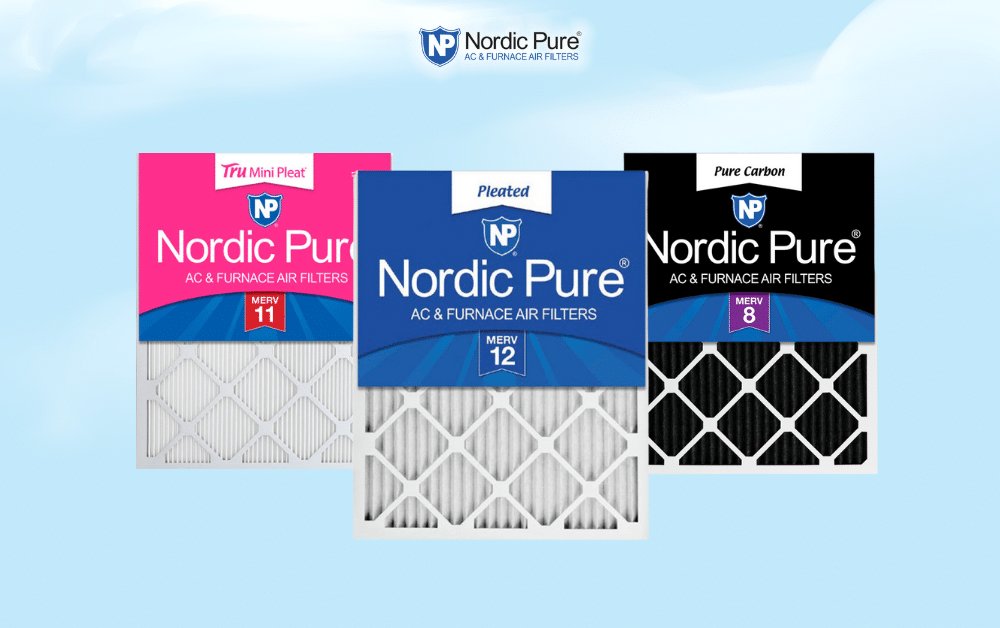It’s 5 AM, and a teacher is burning up with a fever, but all they can think about is what’s going to happen in their classroom today. They need a substitute, and they need it fast.
The substitute walks in completely blind. They don’t know the classroom routines, can’t find the lesson plans, and have no clue which kids need extra help or who sits where.
That’s where a substitute binder saves the day. It’s like leaving a detailed roadmap for someone to run the classroom exactly the way the teacher would, even when they can’t be there.
What is a Substitute Binder?
A sub binder is a teacher’s lifeline when they need to be away from the classroom.
It’s a ready-to-go organizational tool that includes everything a substitute needs to know, including classroom schedules, daily procedures, student information, and detailed lesson plans, all in one place.
For those who are dealing with a planned absence or an unexpected emergency, this binder ensures that your classroom runs smoothly in your absence. These days, substitute binders come in various styles to fit different preferences.
You can choose from traditional printable versions, editable PowerPoint templates, or convenient Google Slides formats that make updating information quick and easy.
Key Features to Look For in a Sub Binder
A high-quality sub binder should be simple to travel through, quick to update, and comprehensive enough to guide any guest teacher through your day.
- Editable Sections: Easily customize class information, schedules, seating charts, and procedures for yearly updates.
- Format Compatibility: Look for binders that are editable in PowerPoint, Google Slides, or PDF, suitable for both digital and print use.
- Thematic Designs: Choose from stylish themes like Retro, Minimalist, or Farmhouse to match your classroom vibe.
- Emergency Templates: Pre-filled plans, class routines, and student info make last-minute absences stress-free.
How to Create a Smart Substitute Binder in Easy Steps
Creating a substitute binder is one of the best ways to ensure your classroom runs smoothly when you’re away. Here’s a step-by-step guide to help you set it up with confidence and clarity:
Step 1: Choose and Prepare Your Binder
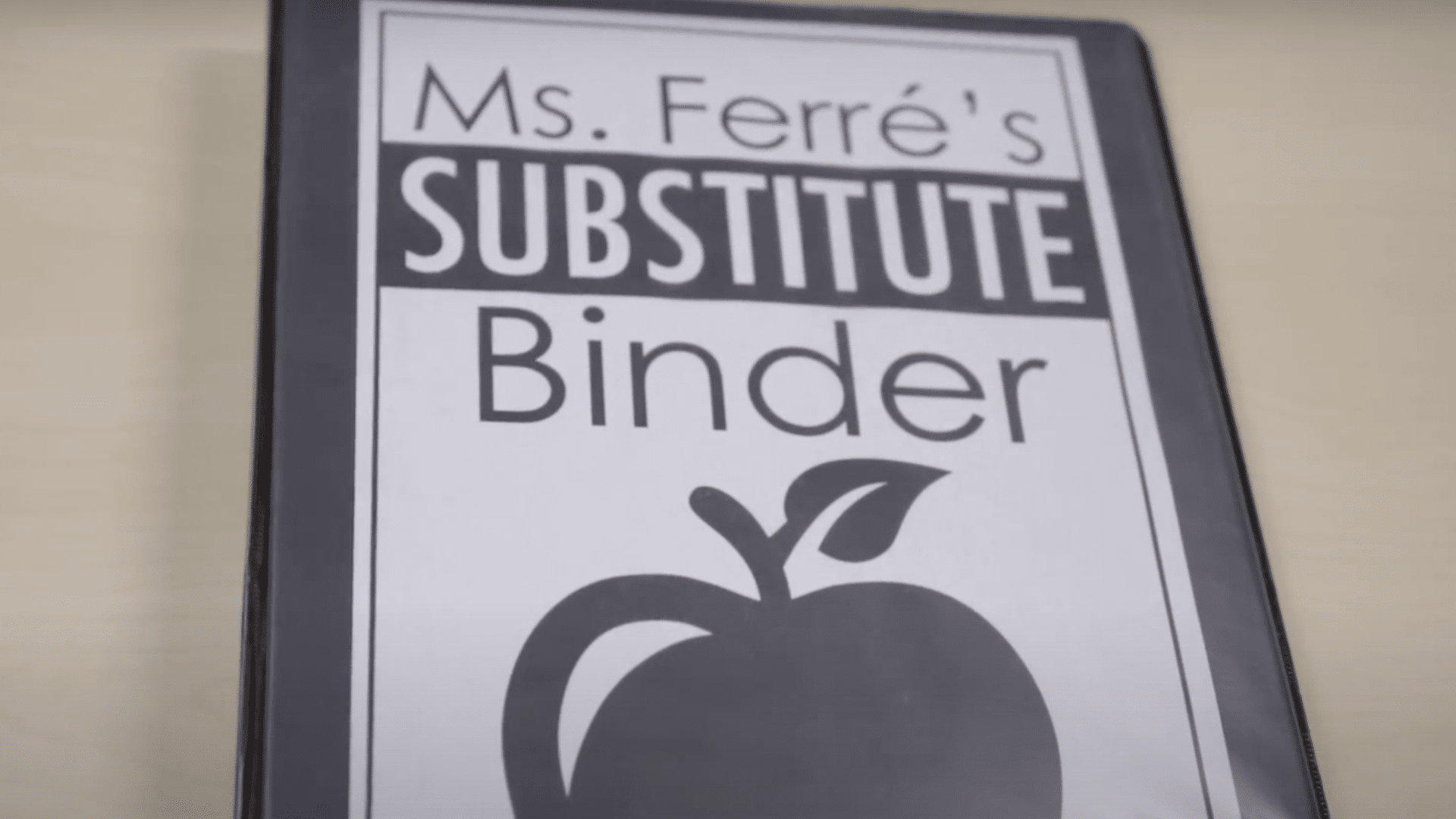
Start with a sturdy binder, ideally 1–1.5 inches thick. Use sheet protectors to keep your pages clean and easy to update throughout the year.
Optional: Add dividers if your binder includes many sections. Place a printed sub-report form in the front pocket for easy access.
Step 2: Write a Warm Welcome Letter
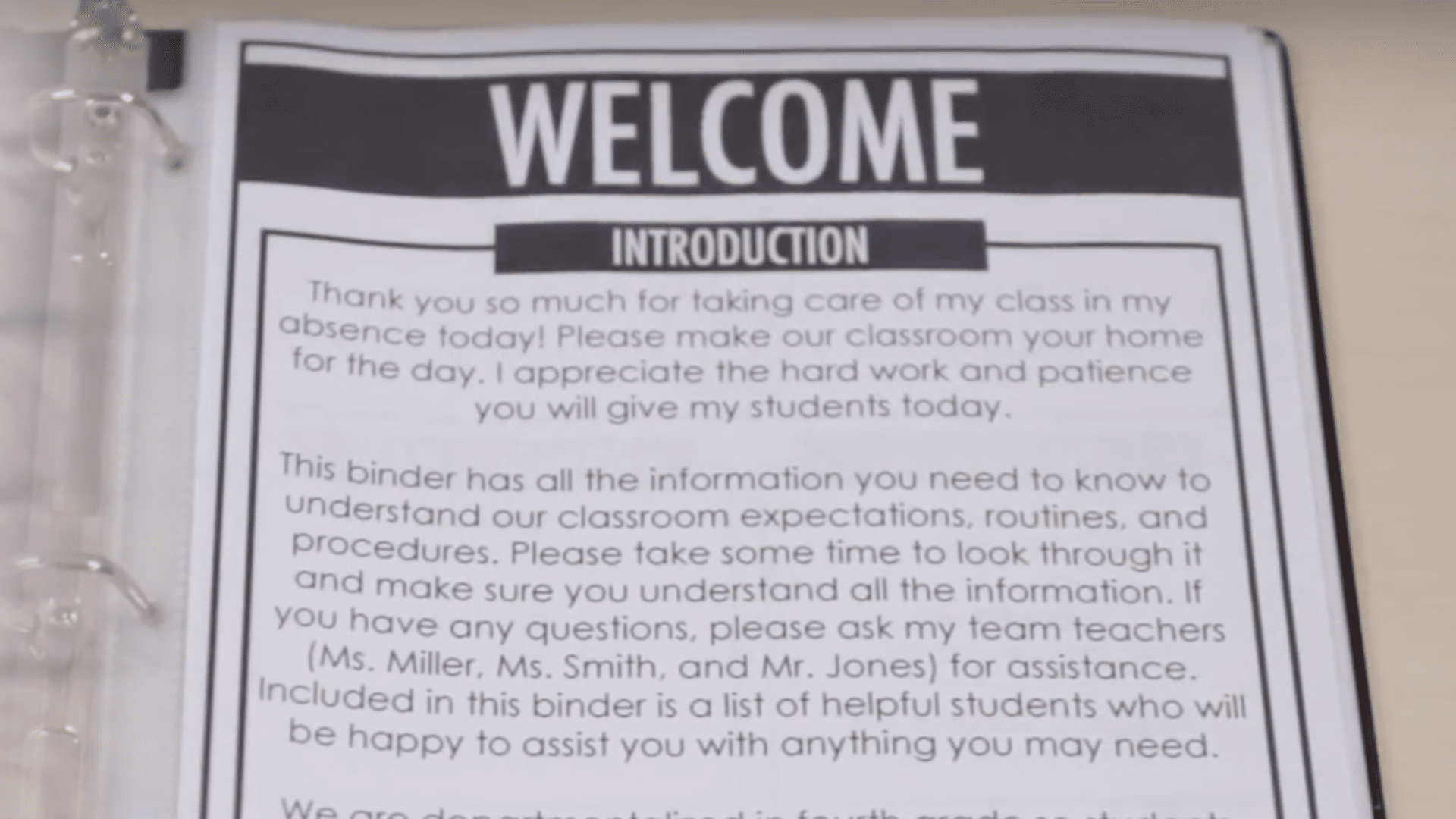
Include a friendly welcome note to your substitute. Express your appreciation, provide key contacts, mention class transitions (if any), and remind them to fill out the subreport at the end of the day.
Step 3: Add Essential Class & Contact Info
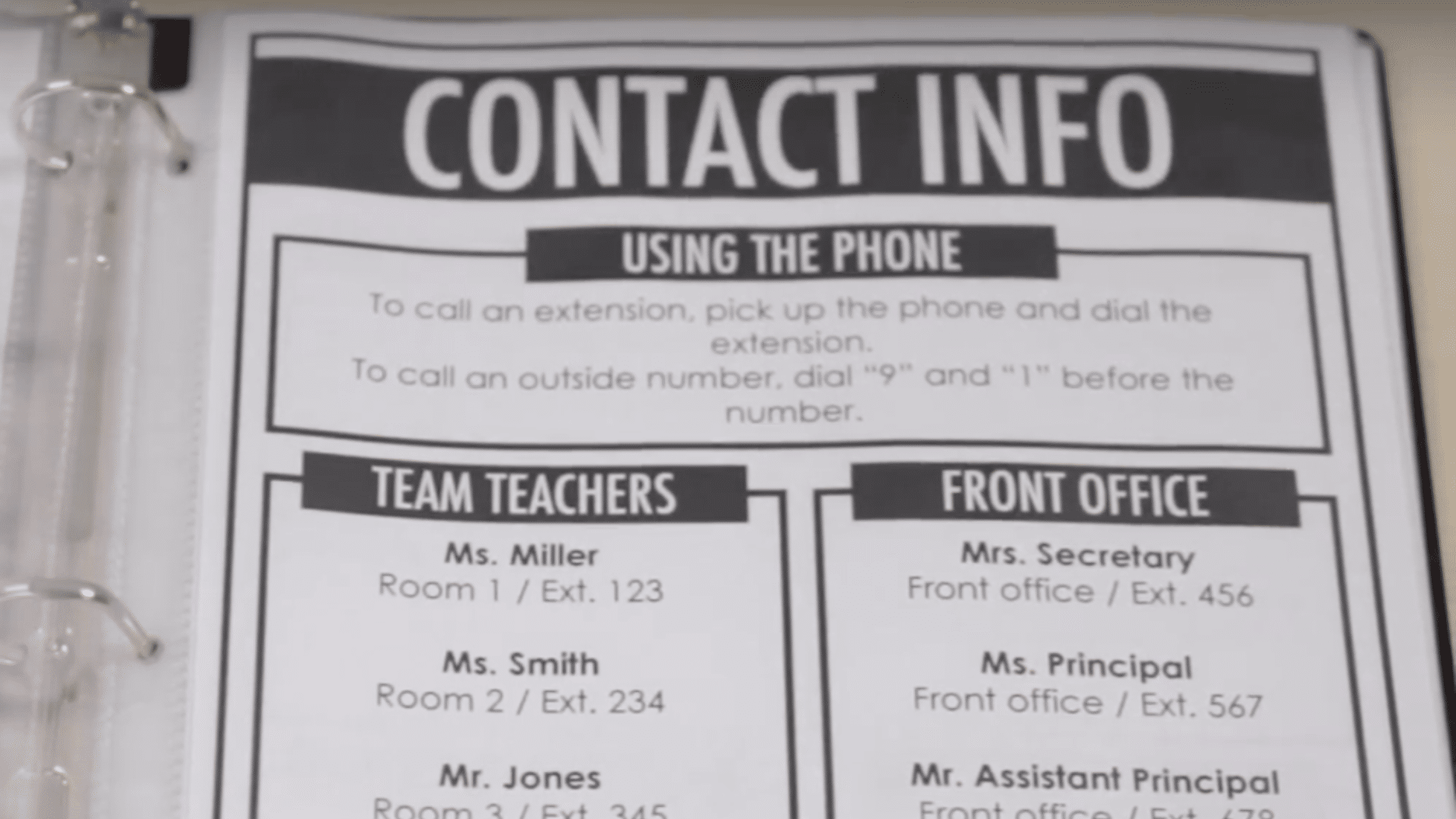
Include instructions for using the school phone, as well as the contact names and extensions for your team teachers, front office staff, specialists, nurses, and custodians.
Add a full school phone list, if possible, just in case.
Step 4: Insert Daily & Special Schedules
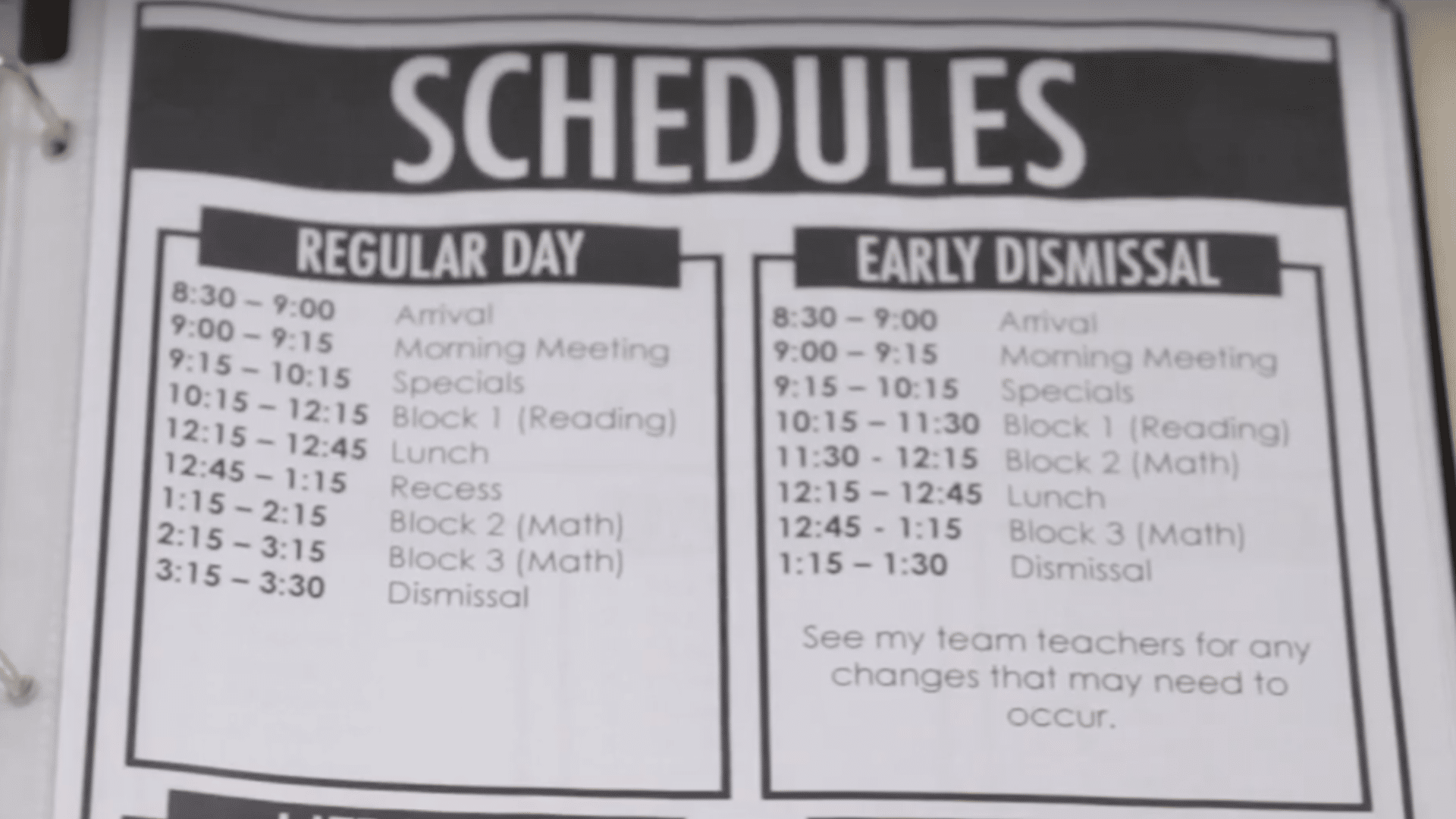
List your daily schedule (including times) and also include versions for early dismissal or delayed days.
Be sure to add a special rotation schedule and a note for the sub to check with team teachers in case adjustments are needed.
Step 5: Include Student Info and Seating
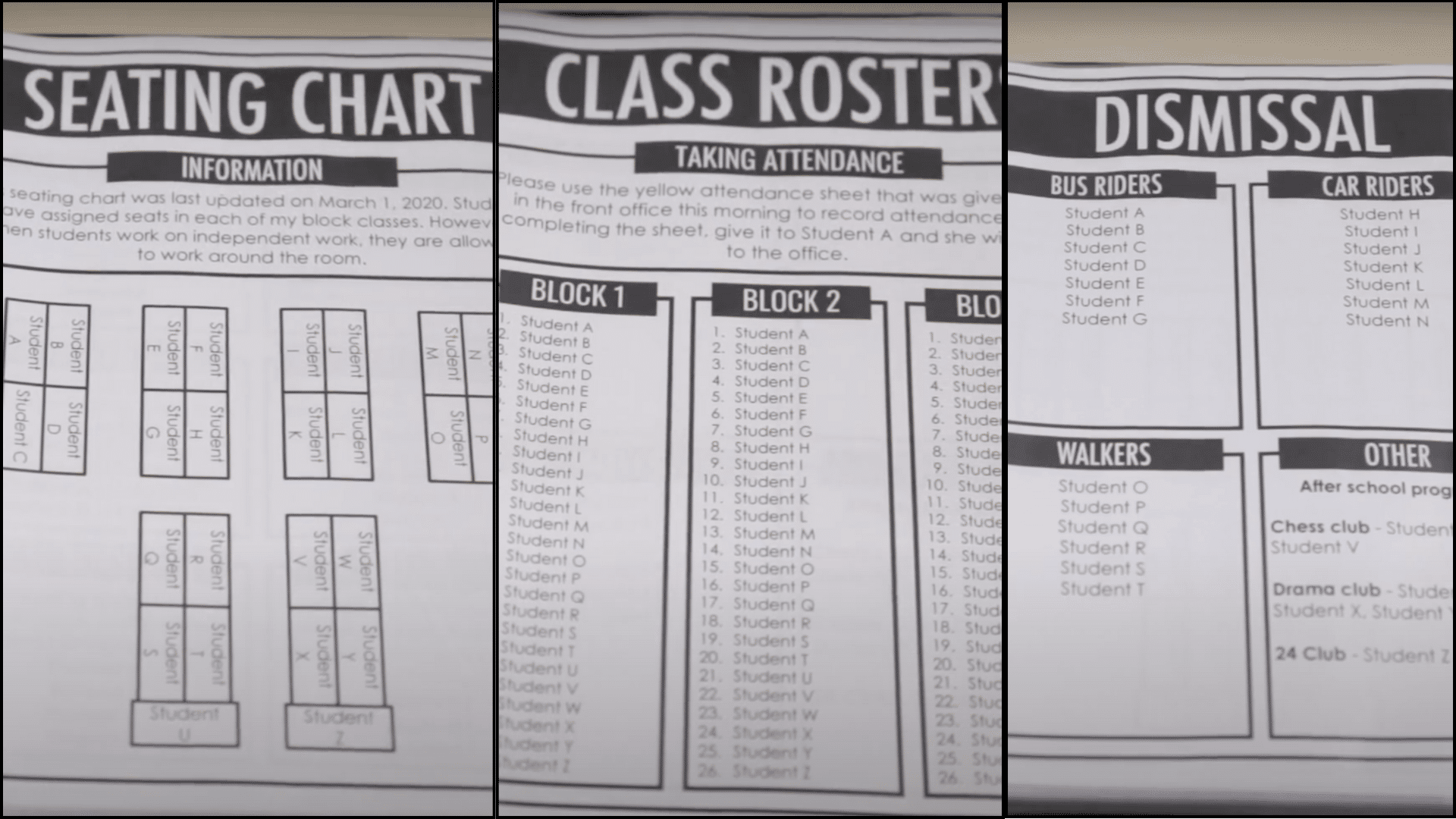
Add class rosters (one per class), dismissal info (bus numbers, walkers, etc.), and seating charts.
You may also include reliable helpers, allergy alerts, behavior accommodations, and pull-out service times. Optional: add student photos for easy identification.
Step 6: Explain Procedures, Behavior & Management

Outline all procedures clearly, including arrival, lunch, recess, transitions, dismissal, assemblies, and other relevant activities. Include classroom rules, rewards, and consequences.
Share your management tools (e.g., attention-getters, hand signals, flexible seating rules) so the sub can maintain consistency.
Step 7: Add Emergency Plans & Tech Info
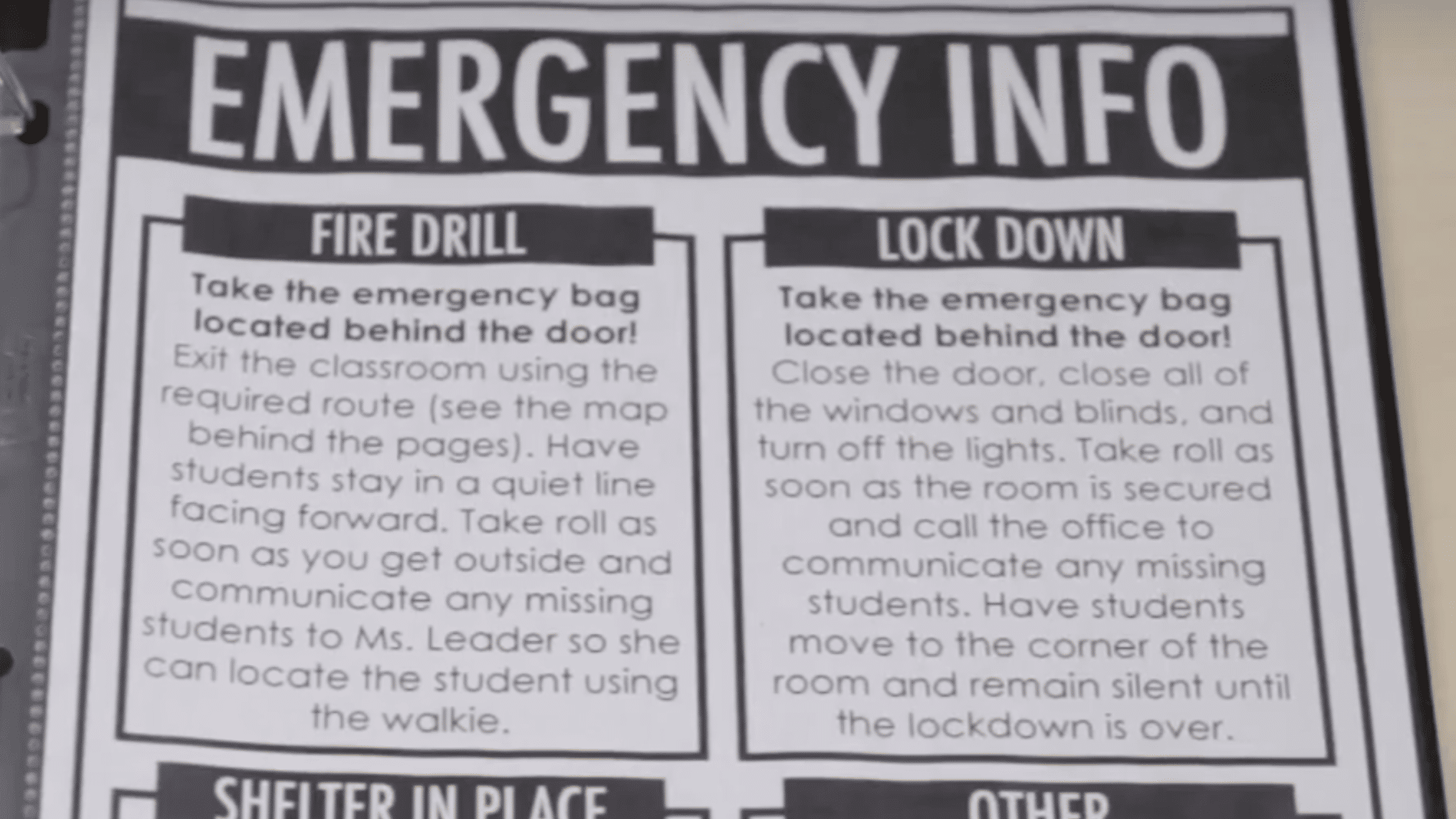
Put emergency protocols (fire, lockdown, etc.) at the very back, with a red tab for fast access. List what to grab in an emergency and include building evacuation maps.
If tech is used (e.g., projectors, Chromebooks), provide clear, step-by-step instructions.
Note: This serves as a sample template that can be adapted for any classroom or grade level.
What’s Inside a Great Sub Binder?
A well-prepared sub binder ensures a smooth day for any guest teacher. Here are the essential components every effective binder should include:
- Daily Schedule: Breakdown of the school day, including start/end times, subject blocks, specials (P.E., Music), and alternate schedules.
- Classroom Information: Includes the teacher’s name, room number, grade level, reliable student helpers, and classroom routines.
- Student Details: Class list, seating chart, health alerts, allergy info, and any accommodations or special needs.
- Behavior Management: Rules, reward systems, consequences, and tips for maintaining order.
- Lesson Plans or Activity Options: Ready-to-go lessons, worksheets, or guidance for filler activities in case plans run short.
- Sub Feedback Form: A quick sheet for the substitute to leave notes on how the day went, behavior issues, or materials used.
Top Places to Buy a Substitute Binder
If you’re looking for a ready-made or editable sub-binder, here are the best places to find one:
Made By Teachers
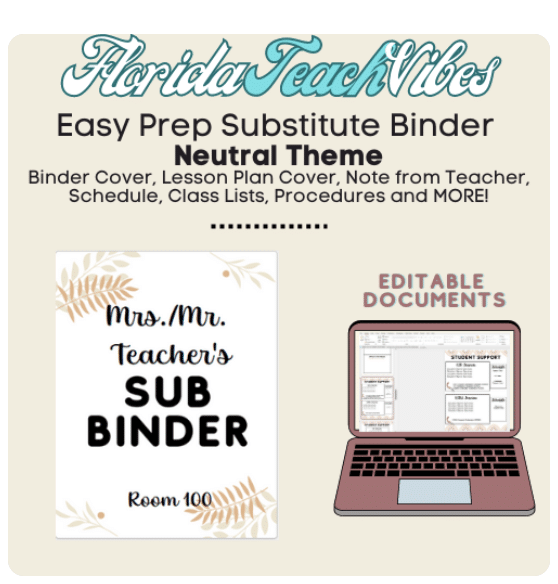
This editable binder features customizable templates for class routines, emergency contacts, and daily procedures, available in both Google Slides and PowerPoint formats.
- Price: $5 – $12 (approx.)
- Perfect For: Elementary Classrooms (Grades 1–6)
- Why Teachers Love It: Helps you stay organized, prep subs in minutes, and maintain classroom flow even when you’re out.
Classful

Offers printable and editable binders with daily plans, class rules, emergency info, and subject-based lesson templates.
- Price: $4–$10 (approx.)
- Perfect For: Lower Elementary to Early Middle School (Grades K–5)
- Why Teachers Love It: Supports routine consistency, simplifies substitute communication, and saves a significant amount of time during unexpected absences.
Educate & Rejuvenate
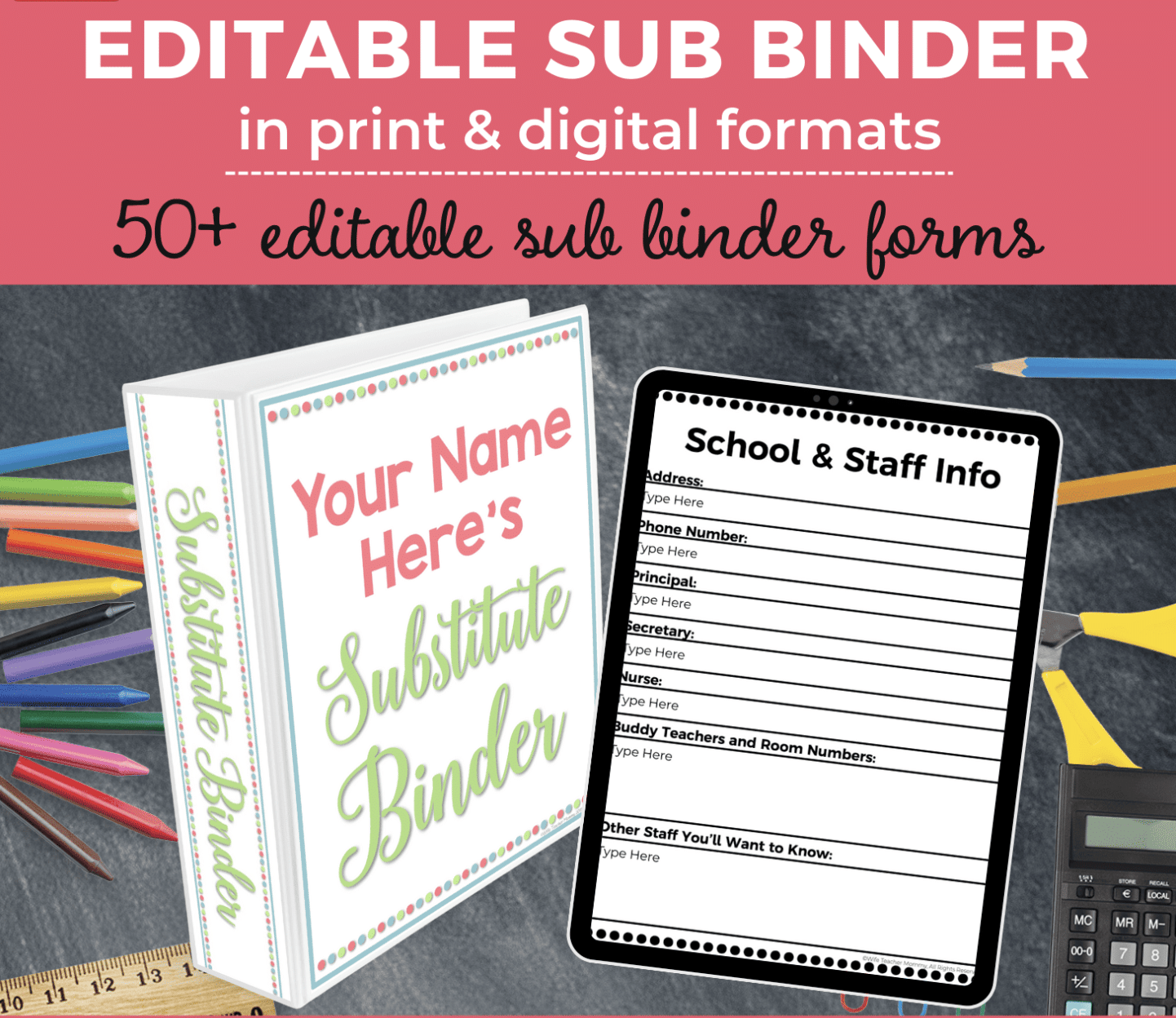
Crisp, professional-looking templates in both PowerPoint and Google formats, with behavior logs, emergency contacts, and ready-to-go lesson outlines.
- Price: $7 – $15 (approx.)
- Perfect For: Early Grades to Upper Elementary (Grades K–6)
- Why Teachers Love It: Makes emergency prep stress-free and keeps your classroom running smoothly with easy-to-edit, ready-to-use resources.
TpT
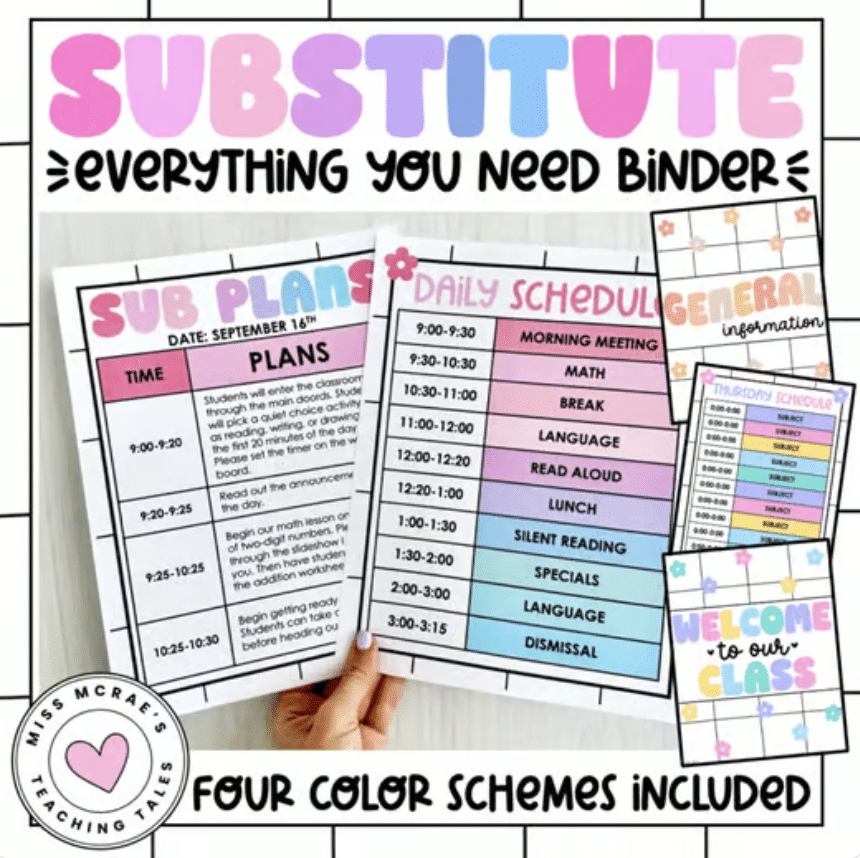
This compact flipbook-style binder packs essential info and forms into a small, easy-to-store design.
- Price: $3 – $9 (approx.)
- Perfect For: Middle Elementary to Early Middle School (Grades 2–8)
- Why Teachers Love It: It keeps everything a sub needs in one quick-glance format, perfect for teachers short on time or space.
Amazon
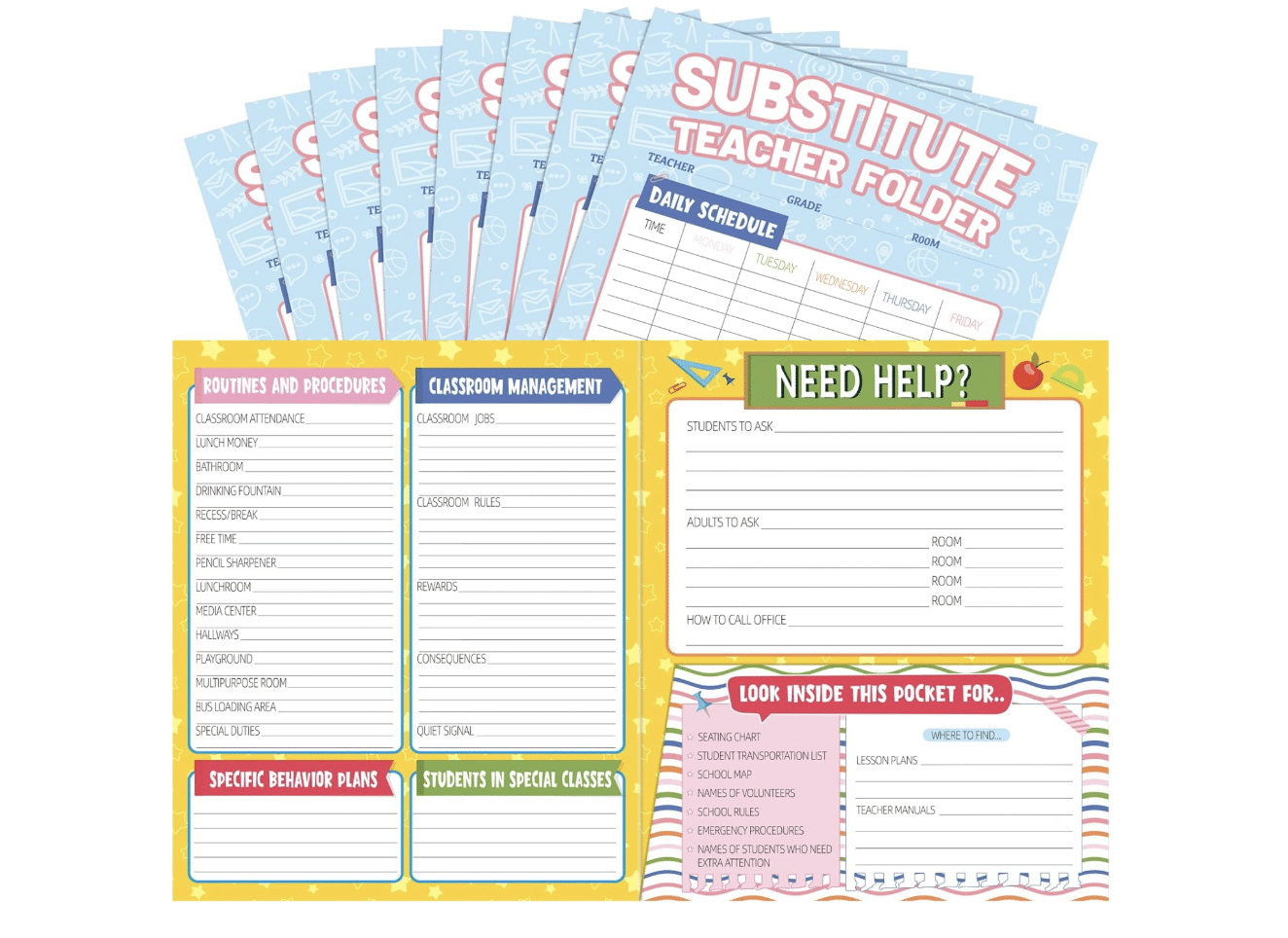
Choose from pre-filled binders or customizable inserts—ideal for teachers who prefer a physical, hands-on option.
- Price: $8 – $20 (approx.)
- Perfect For: Versatile for All Grade Levels (Grades K–8)
- Why Teachers Love It: Offers a durable, ready-to-use classroom backup system that’s easy to personalize and quickly accessible.
Bottom Line
Most teachers have called in sick while lying in bed early in the morning, panicking about what their substitute will do all day.
But teachers with a well-organized substitute binder? They rest easy knowing their classroom is in good hands, and there is no more stress about whether kids will follow routines or if important information gets missed.
A sub binder isn’t just a folder full of papers. It’s peace of mind in a three-ring binder.
Ready to create your own? Begin with the basics and build upon them. Comment down below what you include in your substitute binder.


